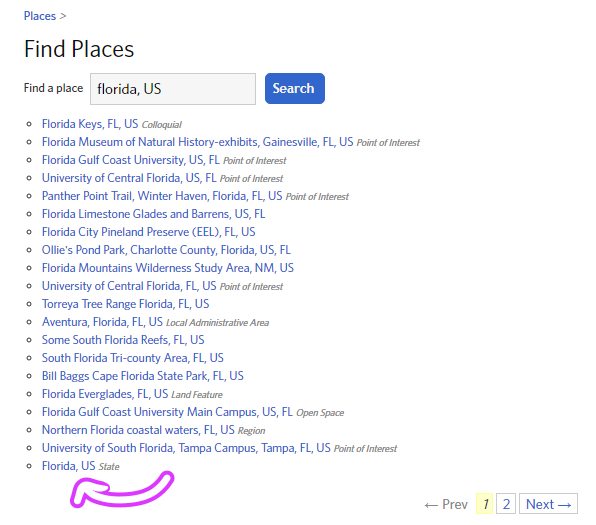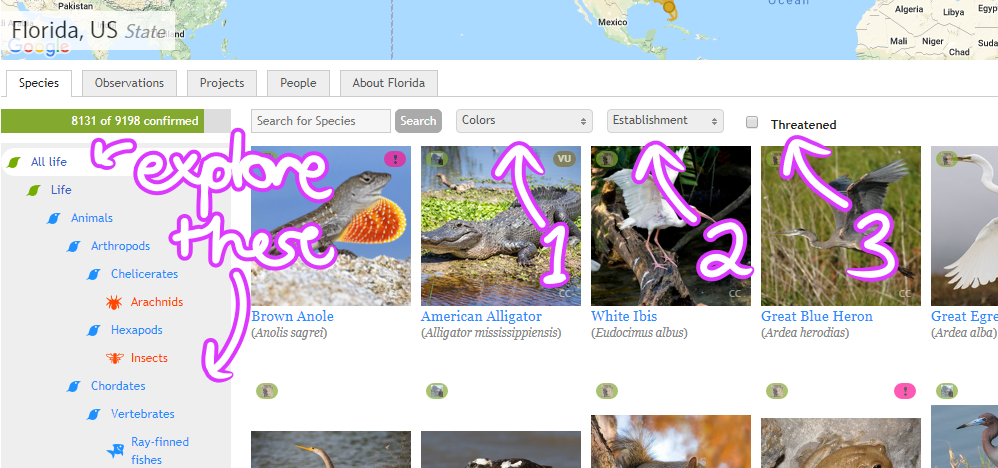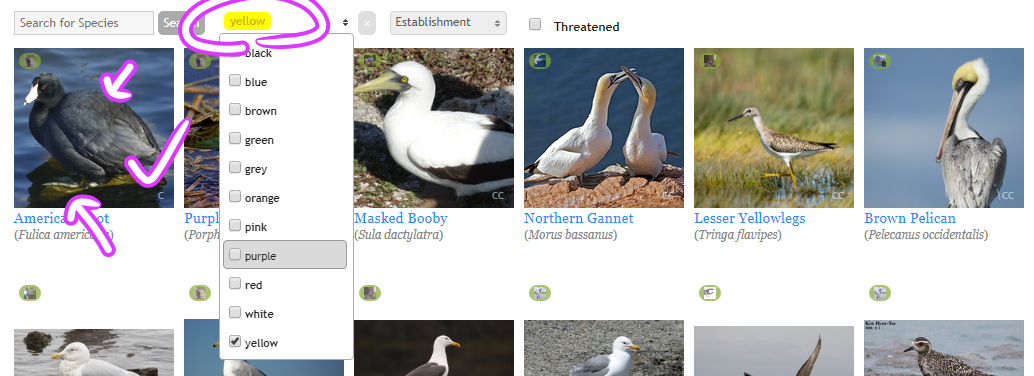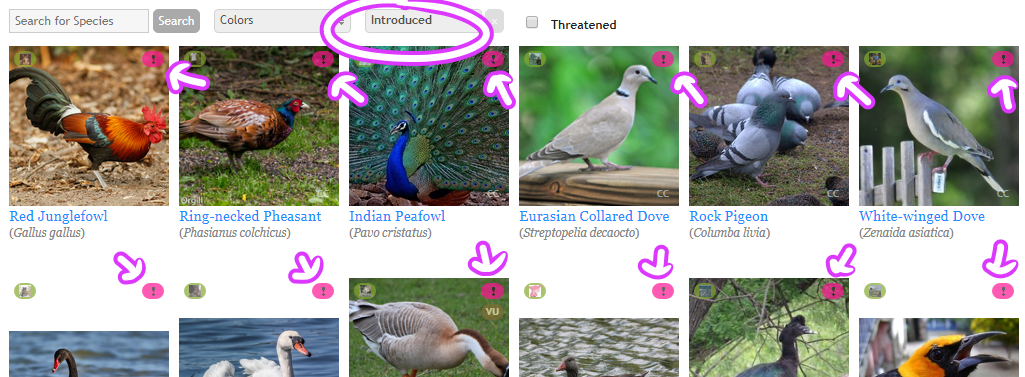A Scavenger Hunt! (and a couple other things)

Hey everyone! I was going to post this a little later, but I've got a hurricane coming my way and would like to get this out before I get knocked off for however long. So, here's iNatters of tumblr's first scavenger hunt! If it's successful, we may do other events in the future! Below are the rules and guidelines, the scavenger hunt list, and other relevant information.
First though, couple other things, mostly reiterations in case you missed it: I'm @kuchipatchis and I'm a co-admin on this project now. I recently put out badges that you might want to check out. If you scroll just past the scavenger hunt list, there are badges you can earn for this event! Also, as a reminder, if you want to join iNatters of tumblr, in order for you to actually have your observations featured on the project, you can't just click the little "Join" button in the corner of the main project page. That allows you to watch the project, but in order for you to actually have your observations featured, message @kuchipatchis or @nanofishology on here, or on our respective blogs, pterygota and nanonaturalist, to let us know you would like to be added so we can do that for you.
And, if you wouldn't mind, please consider eventually filling out a quick survey so I know how people feel about the activities I've put out so far. Thank you!
Rules and Guidelines
You can post the scavenger hunt list with links to your corresponding observations for each item on your tumblr blog and/or iNaturalist journal. Please note that posting your observations to tumblr may mean giving out personal location information to a larger audience, so use discretion if posting to there.
The scavenger hunt will run for the next two months, with the lowest level time completion badge being set at November 1, 2019. There is no required date for any individual list item.
The list does not have to be completed in order.
Only observations made after this announcement count toward the hunt.
All observations must be your own. It's only fair that be a rule for a scavenger hunt, but it is also an iNaturalist rule; you cannot upload other people's media.
Avoid uploading organisms that are not wild - a feral animal or volunteer plant is acceptable, a pet or intentionally cultivated plant is not.
A single observation can count for multiple items on the list as long as it fulfills the requirements (for example, a bumblebee can potentially count for "Something fuzzy", "Something yellow and black", and "A bee native to your area").
Exercise safe and responsible behavior - don't endanger yourself or any organisms you come across!
We may make posts featuring observations from the scavenger hunt, but will check with you for permission before doing so.
The Scavenger Hunt List:
- An example of camouflage
- A plant growing out from the water
- A mushroom
- A fish
- A pupa
- Something fuzzy
- Something spiky
- Something having a meal
- A symbiotic relationship
- Something growing on or out of a man-made object
- An animal with more than 8 legs
- An animal with no legs
- Something that lives in a shell
- Something yellow and black
- Something brown and white
- Something purple and green
- Something really common in your area
- Something not native to your area
-
A bee native to your area
(Try to avoid honeybees - they're not native to most places in the world.) -
Something classified as a threatened species
These species will have a little button on their observation page identifying them as such. This example shows a wood stork with a button identifying it as endangered. This example shows a gopher tortoise with a button identifying it as vulnerable (and also one identifying it as endemic!) -
A feather
You can add any feather observations to the project Found Feathers. -
An animal track
For examples, you can check out North American Animal Tracking Database. And, if you are North American, you can add your finds to the project. -
Mating behavior
You can add any mating behavior to the project, Mating behaviour. -
A plant gall
For examples of what these look like, look at the project Galls of North America. You can only add to them if you are North American, however. -
A leaf mine
For examples of what these look like, look at the project Leafminers of North America. Again, you can only add to them if you are North American.
Badges
There are special badges you can earn from this! Here they are:
List Checker
 Level 1: Get 10 items off of the list
Level 1: Get 10 items off of the list
 Level 2: Get 18 items off of the list
Level 2: Get 18 items off of the list
 Level 3: Complete the entire list
Level 3: Complete the entire list
Time Master
 Level 1: Complete the entire list on or before November 1, 2019
Level 1: Complete the entire list on or before November 1, 2019
 Level 2: Complete the entire list on or before October 16, 2019
Level 2: Complete the entire list on or before October 16, 2019
 Level 3: Complete the entire list on or before October 1, 2019
Level 3: Complete the entire list on or before October 1, 2019
Helpful Hints
Think outside of the box! A lot of these have a lot of different possible ways to go about it. For example, i would say all three of these count as fuzzy:
https://www.inaturalist.org/observations/23247677
https://www.inaturalist.org/observations/11279332
https://www.inaturalist.org/observations/29663957
Always be on the lookout! No matter how short an errand you may be running, nature is always out there. You never know what you might see when or where you least expect it!
Learning is good! Don't know something? Don't be afraid to look it up or ask questions, which you are welcome to do in the comments! On that note, something that might be useful is the Places feature - scroll down just a little more to learn about that!
Need help using inaturalist? Here's some tutorials for uploading observations:
App Tutorial
Website Tutorial
The Places Feature (impromptu tutorial)
iNaturalist has a feature called "Places" that can be useful for browsing, well, places. You can use it to see what you can expect in your area (or any area!)
Here's how to use it:
First, find it on the toolbar at the top of the site. It's under the "More" dropdown.

Once there, you'll be brought to the places screen. You can then search for a place. I'm going to be looking for what i can find in my state, but if I really wanted to, I could narrow down the search much more (I like to keep track of how well I'm doing in my county). Be warned, not everywhere is given a "place", but they can be added.

After that's done, it will bring you to a screen of lots of things that match your search. You can then pick which one you wanted to look at. I'm looking for the whole state right now, so I want to choose that.

Now, it will take us to the page for Florida. It happens to be found at https://www.inaturalist.org/places/florida so that's an easy url to refer back to. The default should show the species found in the place, but if you landed on a different thing, just click the tab that says "Species".

Down the lefthand side is a tree of different taxa. Clicking on them will only show members of that taxa on the screen. Above the species icons are some search options that might be helpful to get ideas of what to look for.
First, let's look at the "Colors" box. Clicking on it will show some color choices to select, and then it will show organisms that match the color.

There we go. Now, I don't always agree with their claims about animal coloring, and I'm pretty sure they leave out some animals that fit the color, but nothing is perfect, and this is just for getting ideas. But the American Coot looks like a great candidate for "Something yellow and black" because they have big yellow feet and black feathers. Maybe I'll keep an eye out for one if none of my black and yellow colored syrphid flies show up.
Next, let's have a look at the "Establishment" box. Clicking on it, you can choose "Native", "Endemic", and "Introduced". Native organisms are those that naturally occur in an area. Endemic organisms are native organisms that also appear nowhere else. Introduced organisms are organisms that are not native to a place, but can now be found there anyway. That's something on the list, so we will look at that.

See those little pink "!" buttons in the corner of the icons? That identifies organisms that have been introduced to an area through human activity. So, anything here is something I could get for that one. Again, this database isn't perfect, but it's good enough.
Finally, let's look at the "Threatened" checkbox. Clicking it will only show species that have conservation concerns.

There it is! Notice the buttons in the corner of each observation. The majority of the top row has the button "NT" which means Near Threatened. Accept that Near Threatened is considered under Threatened. The only two on the top row that have different buttons are the Whooping Crane with "EN" for ENdangered, and, strangely, the Passenger Pigeon with "EX" for EXtinct. I didn't expect that to show up. I think it's safe to assume I won't be getting that one for the scavenger hunt. Anyway, I can now browse this for organisms to keep an eye out for (or not....)
So, if you need any ideas on what you might be able to find in your area, try that out!





























Comentarios
im keeping my checklist here!
https://www.inaturalist.org/journal/kuchipatchis/27056-my-scavenger-hunt-checklist
feel free to post yours here too
I'm in! My list is here: https://www.inaturalist.org/journal/driftlessroots/27091-just-for-fun-inatters-of-tumblr-scavenger-hunt-my-list
great!!
This is spectacular! Great idea!!!
Also, hope you stay safe as Dorian approaches. As it's safe, be sure to document how wildlife responded to the event -- it'll be interesting!
thanks!
I'm keeping mine on tumblr for now-- only seven left to get!
https://speciesofleastconcern.tumblr.com/post/187539454145/inaturalist-scavenger-hunt-in-progress
Three critters to go! One should be easy, one at least doable, the last...Nobody should be mating in September but nature is weird!
oh, yikes, i might have not had perspective on that one.... SO sorry about that!
i tried to make sure all of them were globally do-able but i have no idea what people's seasons are like and just assumed at least bugs were reliable to find mating around this time
@kuchipatchis No problemo, really. :D It's an educational part of the challenge! Blew up one of my assumptions and made me do some research. Now to get hunting!
~~~~~~~~~~~~
And now, a few hours later I'm done! Actually got the mating behavior right off the bat. :D


oh, really? thats a relief! congratulations!!
i came here, before seeing your comment to say, in the absence of mating animals, i realized that flowering plants would count as mating, so assuming there are flowers out (assuming.... my floridian apologies) that would work as well!
All I've got to go is the pupa--i don't know why that would be hard, but here we are!
Agregar un comentario